Ultimate Guide to Polish Food with Recipes (by a Native Pole!)
As a native Pole, I’m delighted to take this opportunity to acquaint you with some of the finest examples of Polish cuisine.
Traditional Polish food is rich in meats, bread, mushrooms, potatoes, and pickles of all sorts.
Short History of Polish Cuisine
I could go on and on about the history of Polish cuisine, as I actually worked on it for my thesis at the history department back in college, but let me cut to the chase.
Due to the turbulent history of Poland starting from Medieval Times, through being occupied over centuries, then destroyed during WWII and finishing on communism up to almost 90s of the XXth century, many dishes originated with limited resources and ingredients.
They changed over the years and ingredients evolved, but the concepts persisted. Food had to be long-lasting (hence the popularity of pickled things) and fatty dishes helped survive the long winters.
Food has always had to be celebrated and this is why many famous Polish dishes take a long time to prepare. For example, a good bigos takes days to make, and if you consider the fact that you might want to collect mushrooms for it during the mushrooming season, then dry them, then a few months later soak them then one could say it takes months to make.
20 Best Traditional Polish Foods You Should Try
Polish Starters & Soups
1. Pierogi

Most foreigners mostly know pierogi, the crescent-shaped dumplings with fillings. They could be served as an appetizer, lunch, main dish, or dessert.
Traditionally, pierogi are boiled but these days it’s not impossible to see them fried or baked. They’re filled with farmer’s cheese and potatoes (ruskie), cabbage and mushrooms, minced meat, fruits or cottage cheese and raisins.
Outside of Poland, many people like to use pierogi sauces and toppings, but traditionally in Poland a simple butter or onion is the most common.
Unless you order sweet pierogi, they’re usually topped with fried onions and/or greaves (Polish: skwarki) – the latter being made of fried lard, so make sure you ask if you’re vegetarian.
Most importantly, pierogi is already plural in Polish (pieróg is singular). It’s not pierogis or perogies like Americans tend to call them. It would be like calling Italian pasta “pastas” or making “gnocchis” out of gnocchi – a big faux pas!
2. Zapiekanki

Zapiekanki are the late-night food or quick lunch of choice in Poland. These open-faced toasted baguette sandwiches are a delicious and convenient option for a quick and satisfying meal.
Zapiekanki typically start with a halved baguette, which is then generously topped with sautéed mushrooms, melted cheese, and often accompanied by other ingredients such as ham, onions, or pickles. The assembled masterpiece is then placed in the oven until the cheese is melted and bubbly, and the bread becomes crispy and golden.
One of the best parts about zapiekanki is the assortment of toppings and sauces available to personalize each creation to your liking. Whether enjoyed as a quick snack during a stroll or as a satisfying meal, zapiekanki are a beloved part of Polish street food culture that shouldn’t be missed.
Next time you find yourself in Poland, make sure to treat yourself to a mouthwatering zapiekanka and experience the flavors that have captured the hearts of many!
3. Red Borscht (Barszcz Czerwony)

It’s a traditional dish during Christmas Eve dinner. The soup gets its striking deep red hue from the main ingredient – beetroots. The beetroots are cooked until tender and then grated or pureed, resulting in a smooth and velvety texture.
Barszcz czerwony can be enjoyed hot or cold, and is often served with a dollop of sour cream and a sprinkle of fresh dill, adding a creamy and herbaceous element to the soup.
4. Soured Rye Flour Soup (Żurek)
This traditional Polish soup is made from fermented rye flour, giving it a distinctly sour taste that sets it apart from other Polish soups.
The base of the soup is created by mixing the fermented rye flour with water, resulting in a sour and tangy liquid known as zakwas. To this zakwas, diced potatoes, smoked sausage, and often other ingredients like mushrooms, onions, or hard-boiled eggs are added to create a hearty and satisfying meal.
Traditionally served in a bread bowl with a sprinkle of fresh marjoram, żurek is a true taste of Poland’s culinary traditions.
5. Chlodnik
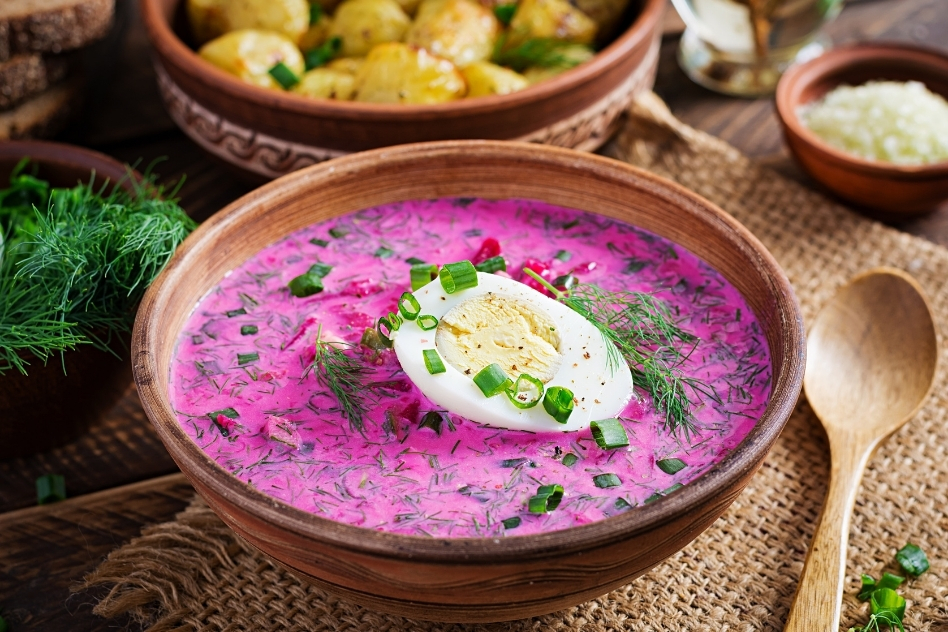
Chlodnik as the Polish name indicates is a soup… but it’s cold. It’s known as also known as chilled beet soup. This delightful soup is a beautiful shade of pink, making it visually appealing and appetizing.
To create chłodnik, young beets (not the same beets as for barszcz!) are boiled until tender, then grated or pureed to form a smooth base. The pureed beets are then mixed with tangy yogurt or buttermilk, resulting in a creamy and refreshing consistency.
6. Krokiety

Krokiety are made by taking thin pancakes, similar to crepes, and filling them with a variety of delicious ingredients. The most common filling consists of cooked and seasoned meat, mushrooms, and sautéed onions. Once filled, the pancakes are carefully rolled up, coated in breadcrumbs, and fried until they achieve a crispy golden exterior.
Krokiety is often served with a dollop of sour cream or a tangy tomato sauce, adding a delightful creaminess or acidity to each bite. These delectable treats can be enjoyed as an appetizer (often with a cup of Red Borscht, or even as a main course.
7. Polish Cucumber Salad (Mizeria)
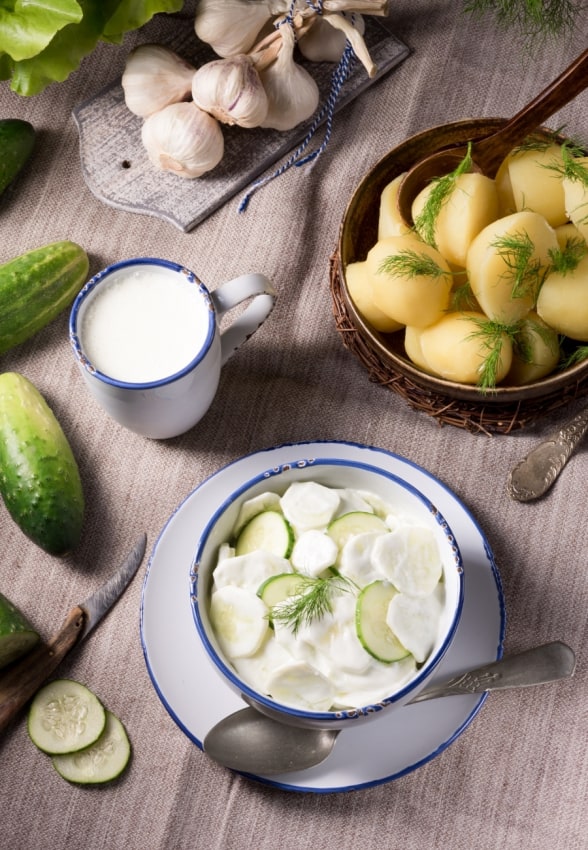
Mizeria, which translates to “misery” in Polish, might have an unusual name, but rest assured, it brings nothing but delight to the table.
This traditional salad features thinly sliced cucumbers bathed in a delicate dressing of sour cream, vinegar, and fresh dill. The simplicity of the ingredients allows the natural crispness of the cucumbers to shine through, while the tangy dressing adds a pleasant zing.
Mizeria is a versatile side dish that pairs well with a variety of main courses, especially those with robust flavors. It provides a refreshing and cooling element, making it a perfect accompaniment to hearty stews, grilled meats, or even as part of a summer picnic spread.
8. Polish Cold Vegetable Salad (Salatka Jarzynowa)
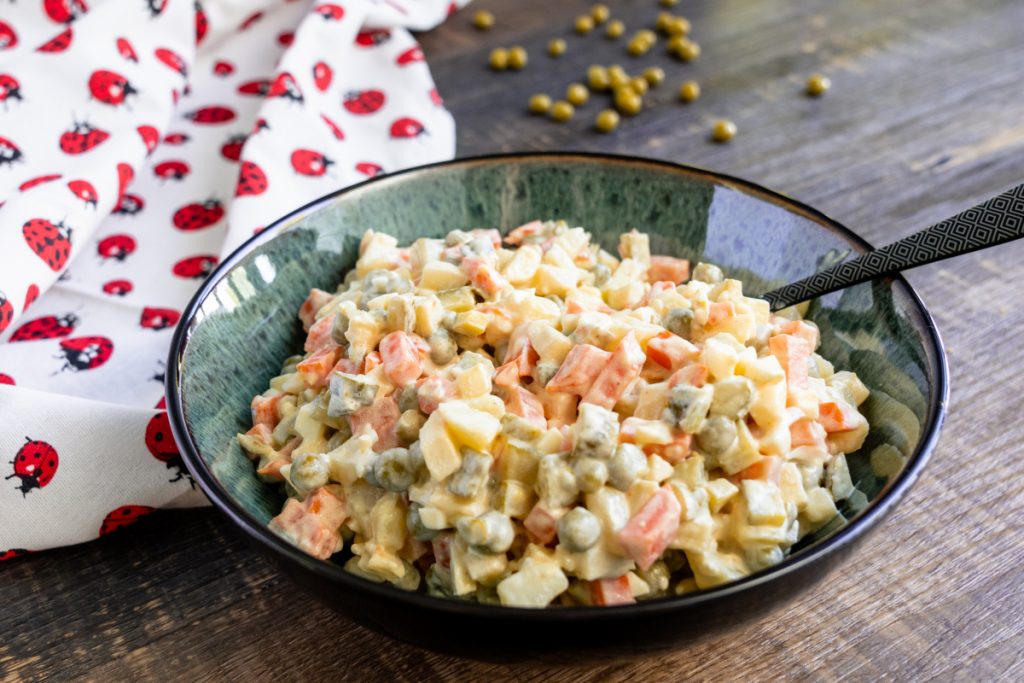
This salad is a delightful medley of cooked and diced vegetables, bound together with a creamy dressing. The star ingredients often include potatoes, carrots, peas, and sometimes additional vegetables like pickles or corn.
The vegetables are cooked until tender, then cooled and finely diced. It’s a refreshing and satisfying combination of flavors and textures, with the sweetness of the vegetables contrasting beautifully with the creaminess of the dressing made of mayo and sour cream.
Salatka jarzynowa is a staple during festive occasions like Easter, family gatherings, and picnics, as it can be made in advance and enjoyed at room temperature.
9. Pickled Cucumber (Ogórki Kiszone)
Poles are obsessed with perfectly picked cucumbers and it’s always served as a side, appetizer, or solo with a beer or vodka.
10. Herring in Sour Cream (Śledź w Śmietanie)

Part of a traditional Polish buffet and Christmas Even dinner is herring in all forms – in vinegar (also known as rolmops) and in sour cream.
To prepare śledź w śmietanie, fresh herring fillets are typically marinated in a mixture of vinegar, sugar, and onions. The marinating process helps to mellow the strong fishy flavor and infuse the herring with a delicate tanginess. Once the herring has been marinated to perfection, it is served in a rich and creamy sour cream sauce with a LOT of pickled onion and lemon juice.
Śledź w śmietanie is often served chilled, allowing the flavors to meld together and the herring to fully absorb the marinade. It is traditionally enjoyed on rye bread or alongside boiled potatoes, creating a harmonious combination of textures and flavors.
Main Dishes Foods in Poland
11. Hunter’s Stew (Bigos)

Bigos, also known as “hunter’s stew,” is a true culinary masterpiece that has stood the test of time and holds a special place in our hearts and stomachs.
The dish is a wonderful blend of sauerkraut, fresh cabbage, various cuts of meat, and aromatic spices, simmered together to create a rich and complex flavor profile. The secret lies in its slow-cooking process, which allows all the ingredients to meld together harmoniously, resulting in a symphony of flavors.
The recipe generally changes from house to house, but it’s a common winter and Christmas dish.
12. Cabbage Rolls (Golabki)

These delightful cabbage rolls are a true crowd-pleaser and one of the second most popular Polish food around the world. Golabki, which translates to “little pigeons” in Polish, may have a peculiar name, but trust me, they are anything but ordinary.
They are tender cabbage leaves lovingly wrapped around a flavorful mixture of ground meat, rice, and aromatic herbs, all gently cooked in a savory tomato sauce.
Whether served as a main course (often with mashed potatoes) or a delightful addition to a Polish feast, golabki will leave you craving seconds.
13. Schnitzel (Kotlet Schabowy)
This beloved dish is a quintessential comfort food in Poland, reminiscent of home-cooked meals and family gatherings. Kotlet schabowy starts with a tender pork chop that is pounded to a uniform thickness, ensuring even cooking.
The meat is then lightly seasoned, dipped in flour, beaten eggs, and breadcrumbs, creating a crispy and golden crust – kind of like Wiener Schnitzel from Austria.
Kotlet schabowy is often served with a side of creamy mashed potatoes or boiled potatoes with dill, and a swarm beetroot salad or mizeria (cucumber salad). It’s the most traditional Polish meal ever!
14. Steamed Dumplings (Pampuchy)

Pampuchy, also known as bułki na parze (steamed rolls) are a kind of large, soft dumplings made from yeast dough. It’s the best food a kid can find in Poland!
Once steamed to perfection, pampuchy are ready to be enjoyed. They are often served warm, drizzled with melted butter and generously sprinkled with powdered sugar. Alternatively a creamy food sauce.
15. Potato Pancakes (Placki Ziemniaczane)

Let’s talk about a classic Polish dish that brings back cherished memories and satisfies cravings like no other – potato pancakes, or as we affectionately call them, placki ziemniaczane.
These golden beauties are basically grated potatoes mixed with finely chopped onions, a sprinkle of flour, and a dash of seasoning. The mixture is then skillfully formed into patties and fried to crispy perfection.
Served hot with a dollop of sour cream, sugar, or with an entire goulash or thick mushroom sauce.
16. Hoofs Dumplings (Kopytka)

The name “kopytka” translates to “little hooves” in Polish, which refers to their shape resembling small hooves. These dumplings are versatile and can be served in various ways, such as boiled and topped with butter, breadcrumbs, or gravy.
They are often enjoyed as a side dish to meat dishes, or as a main course. It’s an especially popular dish at schools and Sunday lunches, but don’t mistake them for Lazy Pierogi (pierogi leniwe).
Lazy Pierogi are sweet and made with cottage cheese while kopytka might look similar they are made with potatoes.
17. Pork Hock (Golonka)
Golonka is a popular dish in Poland, known for its tender and succulent meat encased in a crispy and flavorful skin. This dish is typically prepared by braising or roasting a pork knuckle until the meat becomes tender and easily falls off the bone.
The pork knuckle is often marinated or seasoned with a variety of spices, herbs, and aromatics such as garlic, caraway seeds, and bay leaves. It’s then slow-cooked for hours, allowing the flavors to penetrate the meat and create a melt-in-your-mouth texture.
Desserts from Poland
18. Polish Donuts (Pączki)

Let’s shift gears to something indulgent and sweet that is sure to satisfy your dessert cravings – pączki.
Pączki are deep-fried pastries made from a rich, yeasted dough that results in a soft and pillowy texture. Traditionally filled with various sweet fillings such as rosehip jam, prune jam, or custard, these doughnuts are a true treat for the senses.
Pączki are a beloved delicacy, especially during Fat Thursday, a day when Poles indulge in these delectable treats before the start of Lent.
19. Poppy Seed Cake (Makowiec)

Makowiec is a delightful sweet treat that features a tender, yeast-based dough rolled around a generous filling of ground poppy seeds mixed with honey, sugar, and sometimes nuts or dried fruits and nuts.
The dough provides the perfect canvas to showcase the richness and depth of the poppy seed filling. The roll is typically baked until golden brown, and then often dusted with powdered sugar for an added touch of sweetness.
Makowiec is a staple during festive occasions and holidays, especially Christmas and Easter. It is a symbol of good luck and prosperity, and its presence on the dessert table is a delight for everyone.
20. WZ Cake (Wuzetka)
Warsaw cake or chocolate mousse cake. WZ cake or Wuzetka is a decadent and indulgent treat that consists of layers of chocolate sponge cake and luscious chocolate mousse.
The cake is named after the famous W-Z route in Warsaw, which resembles the pattern of the cake’s chocolate ganache topping.

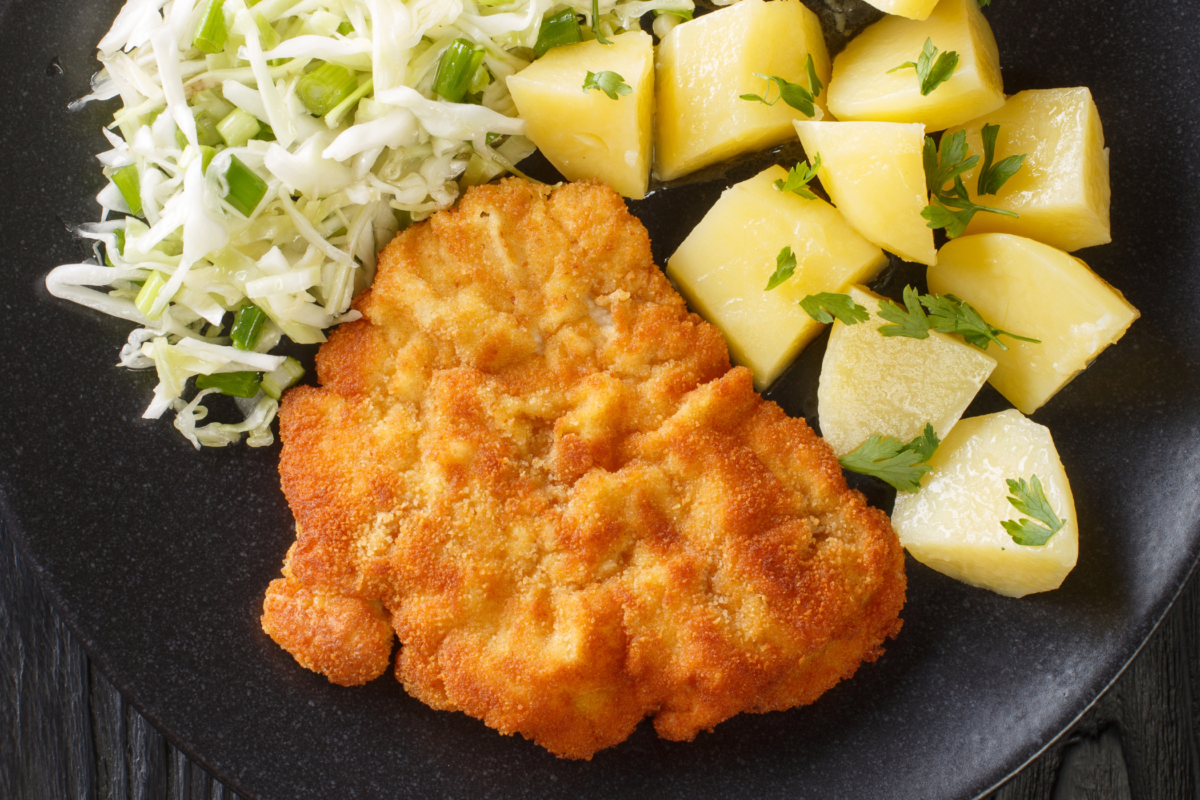
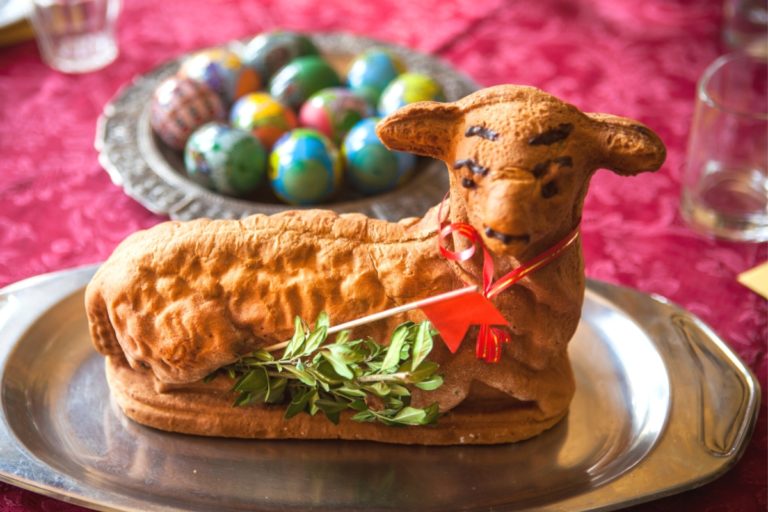
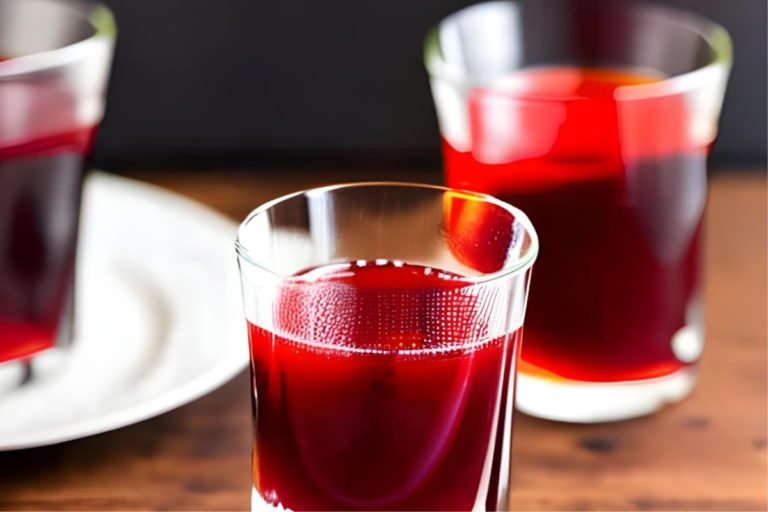

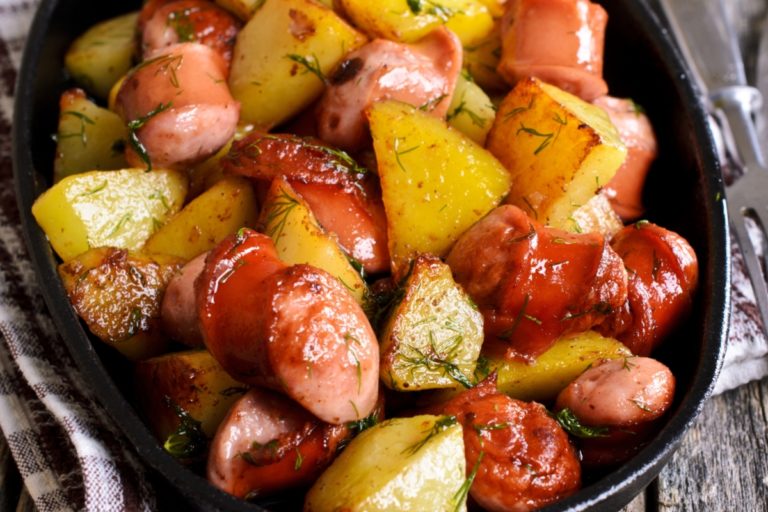



My wife has Polish ancestry, and we had the most wonderful trip to Poland many years ago. She is from Michigan and grew up with Polish recipes on boths sides of her family. One dish in particular that she remembers but cannot find is a recipe for is “City Chicken.” She says it is made with beef, veal and pork “chunks/balls” no chicken, fried quickly and baked in a gravy sauce. We don’t eat veal but if we found the recipe we could adapt it. Her memories cannot be matched but do you know this recipe or similar to it.
Much appreciated, love your website.
I have a recipe for City Chicken on my site: https://annainthekitchen.com/polish-city-chicken-recipe/
Keep in mind that this is strictly Polish-immigrant recipe, not truly Polish recipe as it’s not eaten or known in Poland.
In your herring recipe you said fresh? Did you mean salted? My father was polish and it was one of his favourite foods
Everyone just makes it with salted fillets. The best brand is “Lisner” in Poland.
Hi Anna. Just found your list of traditional Polish foods. What memories they bring back. My mother cooked some of these as I was growing up. Now I am old and live in Australia and no Polish food here.
It is only mid morning and I am ready for dinner after seeing your lovely photos and descriptions.
Many thanks.